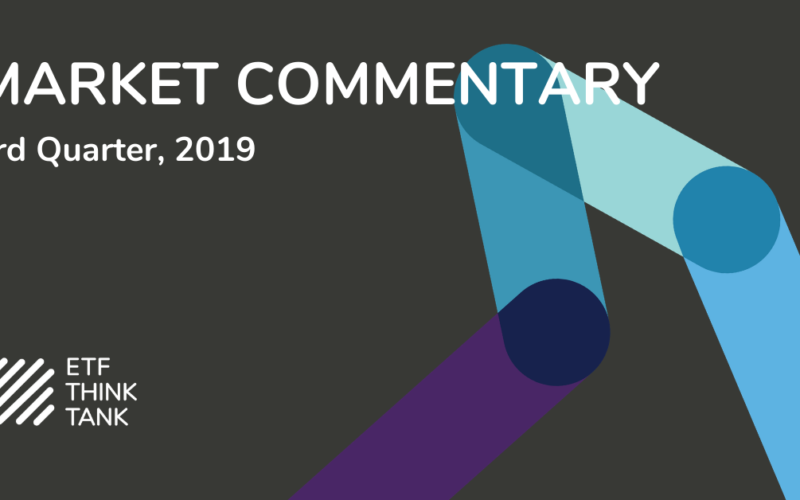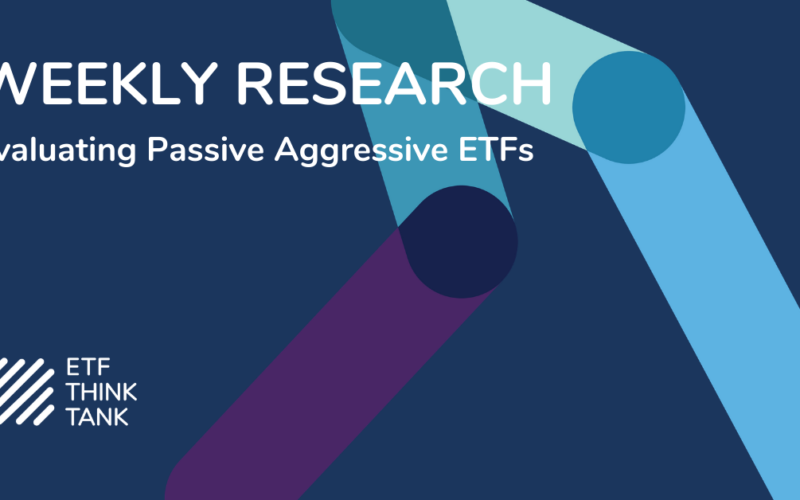Flows arguably reflect investor decisions and sentiment. Eric Balchunas pointed out on Twitter recently that gold ETF flows are just shy of the $10 Billion record set in 2009 which is a, “notable feat given the increase competition (and attacks) from crypto, as well as the fact that in 2009 gold was up 10% more than this year.” However, according to Bloomberg, even more notable is the fact that gold was up about 30.14% over the previous 2 years when the S&P 500 was down 20.15% (December 31, 2007 to December 31, 2009). Could it be that these flows are telegraphing market sentiment for risk management is changing? Over the past 10 years investors in U.S. equities have been lulled into a form of complacency as a result of exceptional returns and tactical investors have been criticized for missing upside. However, during weak periods of time, such as 12/31/07 to 12/31/10, an allocation to gold helped portfolios. For illustration purposes, we highlight that GLD increased in value 68.23% versus a negative 8.12% for the S&P500 during this period of time. Meaning that that at times, in the past, tactical decisions towards gold have added value to portfolios, so this change in flows should be monitored closely. They could be indictive of a change in investor sentiment.

Marking those same portfolios versus GLD
The iShares allocation funds targeted risk funds were launched on November 11, 2008, and during the preceding two years GLD was up 91.06% about triple AOM, the Moderate Risk allocation. Point being, gold added value during the tough periods and a tactical increase would have helped lower volatility and even add alpha. Of course, this was a special period and since November 2010 GLD has mostly only treaded water – up about 3.19%.
The point is, ETF data tells a story about markets and the statistics we track every week also follow our previous months conclusions about high flows in fixed income flows.
What is a fair risk adjusted return or at least an easy way to measure such an objective? Active, Passive, Traditional Beta or Smart Beta? All these labels are complicated; especially when you throw in the definition of factors. Surprise, the answer arguably may lie with 4 ETFs (AOA, AOR, AOM, AOK) that together only have $4 billion in AUM. Don’t shoot the ETF Nerd messenger. For 25 bps these 4 ETFs provide for a BlackRock research definition of what is a portfolio with an Aggressive Allocation, Growth Allocation, Moderate Allocation and Conservative. Arguably, pursuant to developing an ETF Strategy every IPS could include these ETFs as a benchmark. Now for the surprise, there are 75 other ways to participate in this allocation category that holds $13.5 billion in AUM.

Allocation Strategies can be especially complex, but as a solution to lower volatility, they can provide a benefit in portfolios. We also break down the list into subcategories: active, passive, tactical, hedge fund replication. Noteworthy is the fact that the average fee is 53.2 bps and the Weighted Avg Fee is 39.5 bps. We think this matters, because arguably these products provide a benchmark for pricing as well as performance. We expect that this category as a solution will expand meaningfully as active demonstrate value and markets get choppy. However, leading to AUM success, like the First Trust Dorsey Write Focus 5, these ETFs will need to communicate a concise message.
Below we share the top 10 Allocation ETFs by AUM from the ETF Think Tank Security Master and KPIs specific to this asset class:

New launches pick up in September
We found 34 new ETFs to analyze in September and the open/close ratio rebounded to 1.61 from 1.45. This meant that the number of ETFs now is at 2,294, up from 2,278 in August. A discussion about new launches would not be complete without mentioning the Franklin Liberty US Core Bond ETF (FLCB) which has $861 million. We call this, bring your own assets (BYOA). Skeptics about active management in the ETF wrapper should be reminded that active management is also about fixed income, activism and allocation strategies as well as equities. Sticking to the statistics, over the past 12 months, the number of ETFs is up 8.4% and new launches are 239 vs closures of 148.
Assets rebound to a new month-end record
As of September 30, 2019, Assets in ETFs rebounded to $4,047 Trillion, a second record month end close which is rebound nearly a 2% increase from August $3,968 Trillion. Another KPI of significance is our metrics that measures revenues from expense ratios showed a slight sequentially increase to $7.59 billion, but less than the $7.68 billion back in July. Non-Traditional and Active ETFs which presently closed the month at 38.88% and 5.7%, respectively. The average weighted expense ratio remains at .19 Bps despite all the talk of fee wars.
Revenue grows while fees continue to decline
The average weighted expense ratio for US ETF remains the same at 0.19% from July, 31st. Fee compression may be a slow continuum, but with increased assets, the projected 12-month revenue increased from $6.83 billion in January to $7.59 billion today. The percentage of ETF revenue from nontraditional passive ETFs in January was 36.38%; today it’s 38.88%. Active ETF revenue also gained market share, growing from 5.11% to 5.70%. These KPIs help show that investors are still looking for interesting and creative strategies to help diversify their portfolio.

Exchange market share remains constant
There has been very little material movement in Exchange market share of ETF listings in 2019, with NYSE remaining in the dominant position at 69.27%. CBOE Global Markets has 14.08% Nasdaq stayed remained at 16.17%.
Don’t buy an ETF, but do have an ETF strategy for your business
In this report we focus on the allocations strategy as a sub-category of ETFs to highlight how investors and fiduciaries can measure their own performance as part of an ETF Strategy, but also because this category ultimately could contribute to significant growth in the ETF industry. Currently it is barely 1/3 of 1 percent of the overall $4,047 Trillion in AUM. Hedge fund investors could benefit by the tax efficiency of the wrapper. If growth in AUM is going to expand in trillion dollar increments it will not be just from flows to broad low-cost beta, but because of tax efficiency and access to investment solutions in a changing environment.

Contact Dan Weiskopf at dweiskopf@torosoinv.com














